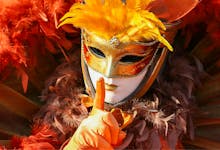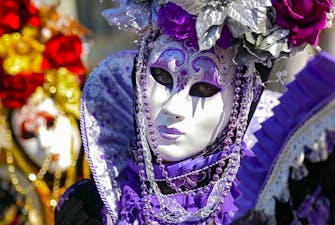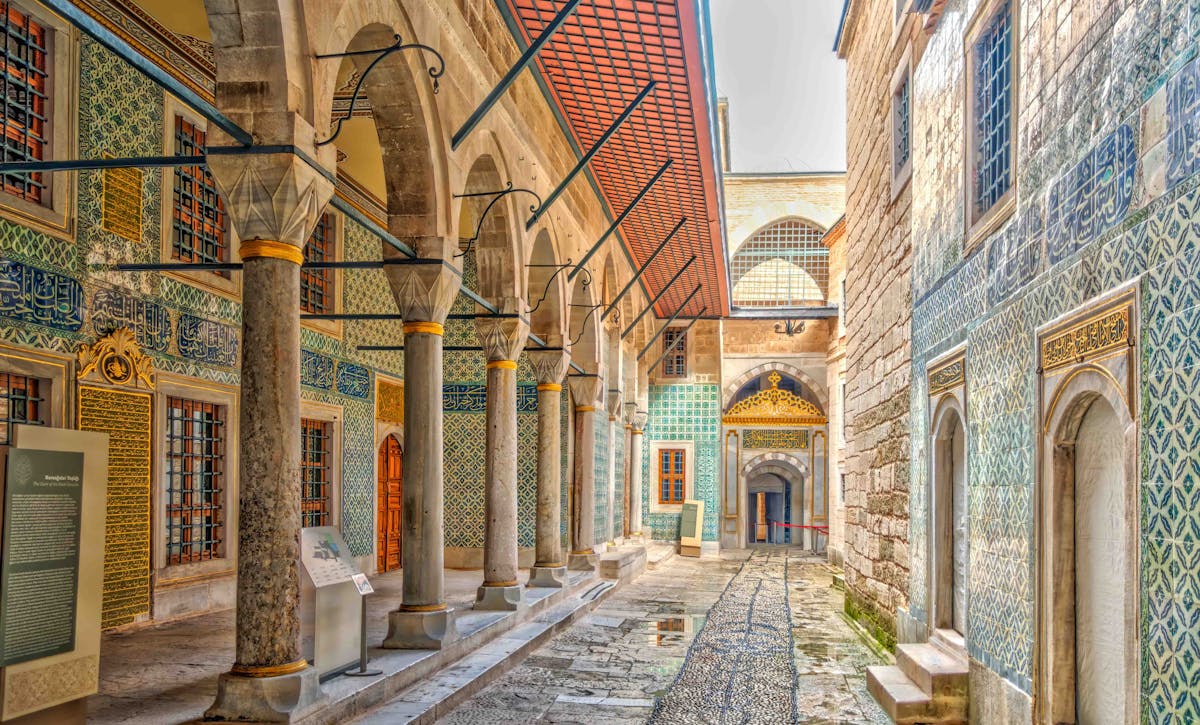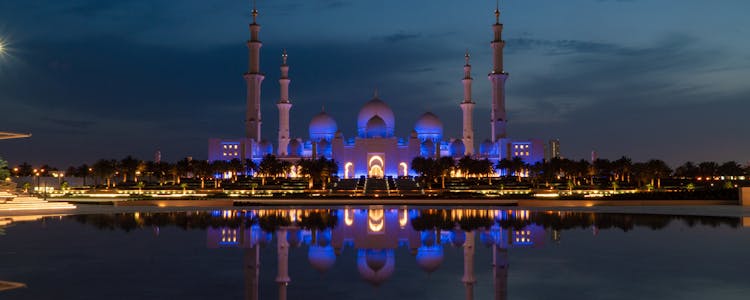The Venice Carnival is one of the most vibrant and magical festivals in the world. Steeped in history, it transforms the already enchanting city of Venice, Italy, into a wonderland of colors and mystery. It dates back to the 11th century, with the tradition growing in fame and scope over the centuries. Originating as a celebration of a victory for the 'Serenissima Repubblica' against the Patriarch of Aquileia in the year 1162, it became an official event during the Renaissance. The carnival is most famous for its distinctive masks, which allowed citizens to hide their identities and indulge in what was otherwise a very stratified society.
Know Before You Go



Handy information
| ⏰ Suggested Duration: | 2-3 days of visit |
| ☀️ Best Time to Visit: | Afternoon |
| 🎟️ Venice Carnival Ticket: | Check here |
Must-see at the Venice Cranival
- The Carnival processions and Parade of Masks
- Live music and performances
- Traditional Venetian food and drinks
- Piazza San Marco
Getting There
Salita S. Basegio, 1648, 30123
Venice - Italy
Get Directions
Opening Hours
The 2024 Venice Carnival will take place from 3 to 13 February
What to expect at Venice Carnival?
- The iconic masks and costumes: Experience the allure of elaborate masks and costumes that epitomize the carnival's enigmatic charm. The carnival is renowned for its stunning and intricate designs, ranging from traditional Venetian styles to contemporary interpretations.
- Street performances: Watch art come to life through impromptu acts by jesters, acrobats, and musicians. The narrow alleys echo with entertainment, ensuring a spectacle at every corner.
- Gondola parades: Float along the grand canals in ornate gondolas, amidst a procession where waterways become stages for historical re-enactments and operatic performances, creating a truly immersive experience.
- Unique festivities: From traditional Italian treats like frittelle (sweet fried dough) and galani (crispy pastries) to exquisite Venetian cuisine, you'll have plenty of options to satisfy your taste buds.
- Traditional games: Take part in the traditional carnival games and activities that happen throughout the city. There’ll be exclusive masquerade balls in centuries-old palazzos, replete with opulent décor and period costumes, bringing history to life.
Recommended Venice Carnival Tickets
Venice Carnival History
History of The Venice Carnival dates back to the 11th century when it began as a celebration for the victory over the Patriarch of Aquileia. This evolved into an annual event during the Renaissance, where elaborate masks and costumes became synonymous with the celebration, allowing people from different social strata to mix anonymously. Interestingly, in 1797, the festival was outlawed by the Holy Roman Emperor and King of Austria, Francis II, in an effort to maintain public order. The 18th century also saw the rise of the Commedia dell'arte, a form of improvisational theater that heavily influenced the Carnival's festivities.
However, the Carnival's popularity waned in the 19th century under the repressive rule of the Austrian Empire. It was not until Venice became part of the Kingdom of Italy in 1866 that the Carnival was revived, albeit in a more toned-down fashion as a way to boost tourism. Thus, in 1979, the festival was restored to its former glory.
Today, the Venice Carnival is a major attraction, drawing tourists from all over the world who come to participate in the revelry and immerse themselves in the city's rich cultural milieu. During this period, Venice becomes a showcase for its incredible craftsmanship in mask-making as well as a vibrant stage for exploring and celebrating its unique heritage.

Highlights of Venice Carnival
1Grand Opening Ceremony
The carnival kicks off with a grand opening ceremony, which takes place in St. Mark's Square. This event sets the tone for the entire festival, featuring music, performances, and the iconic "Flight of the Angel." A chosen guest, traditionally a young woman, descends from the bell tower to the square, suspended on a rope, symbolizing the beginning of the festivities.

2Masked Balls and Parties
During the Venice Carnival, the city abounds with private masked balls and public parties. Lavishly ornamented palazzos open their doors for opulent soirées where guests adorned in period costumes and intricate masks waltz under crystal chandeliers. These balls encapsulate the romance and mystery of Venice, offering a once-in-a-lifetime chance to revel in a world of yesteryear grandeur and intrigue.

3Traditional Venetian Masks
The Venetian mask is an emblem of the carnival, steeped in historical significance and artisanship. Crafted by skilled artisans, these masks come in various classic styles such as the 'Bauta,' 'Columbina,' and 'Moretta,' each with its own backstory and character. Wearing one is not just about hiding one's identity; it's about embodying the spirit of Venice's past, participating in a timeless ritual that celebrates creativity and freedom.

4Costume Competitions and Parades
The costume competitions and parades are a highlight for many, offering a stage for both amateur and professional costume designers to showcase their talent.

5Street Performances
As the Venice Carnival unfolds, the streets become alive with an array of performers. Magicians, fire-eaters, and living statues add to the magical atmosphere, providing unexpected delights around every corner. Jugglers toss objects in a dance-like rhythm, while storytellers reenact fabled tales of Venetian lore.

6Gondola Parades and Regattas
The gondola parades and regattas offer a unique perspective on the city's maritime history. Spectacularly decorated gondolas glide along the Grand Canal, their oarsmen dressed in 17th-century garb, competing in races that echo the competitive spirit of ancient Venetian society. Surrounded by cheering crowds, this event combines athletic prowess with historical pageantry, creating an unforgettable waterside show.

Venice Cranival Opening Hours
- The Venice Carnival usually takes place in February and lasts for two weeks.
- The carnival program varies each day, with events starting as early as 8:30am and lasting until late at night.
Getting There
Vaporetto
The water bus or vaporetto is a popular mode of transport in Venice. You can take the vaporetto from different stops like Rialto, San Marco or Fondamenta Nuove to reach the carnival. It's a unique experience to travel on the canal and enjoy the view of the city from the water.
Train
Venice has two main train stations, Santa Lucia and Mestre. From there, you can take a bus or vaporetto to reach the carnival. If you're coming from other Italian cities, the train is a convenient and comfortable option.
Places to Stay During Venice Carnival


